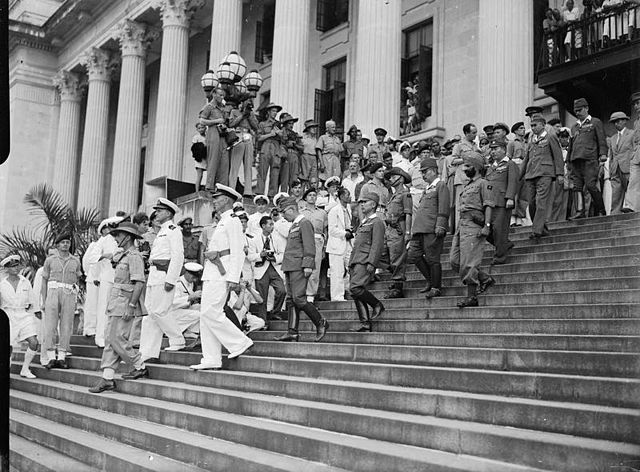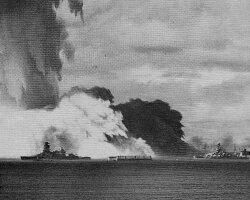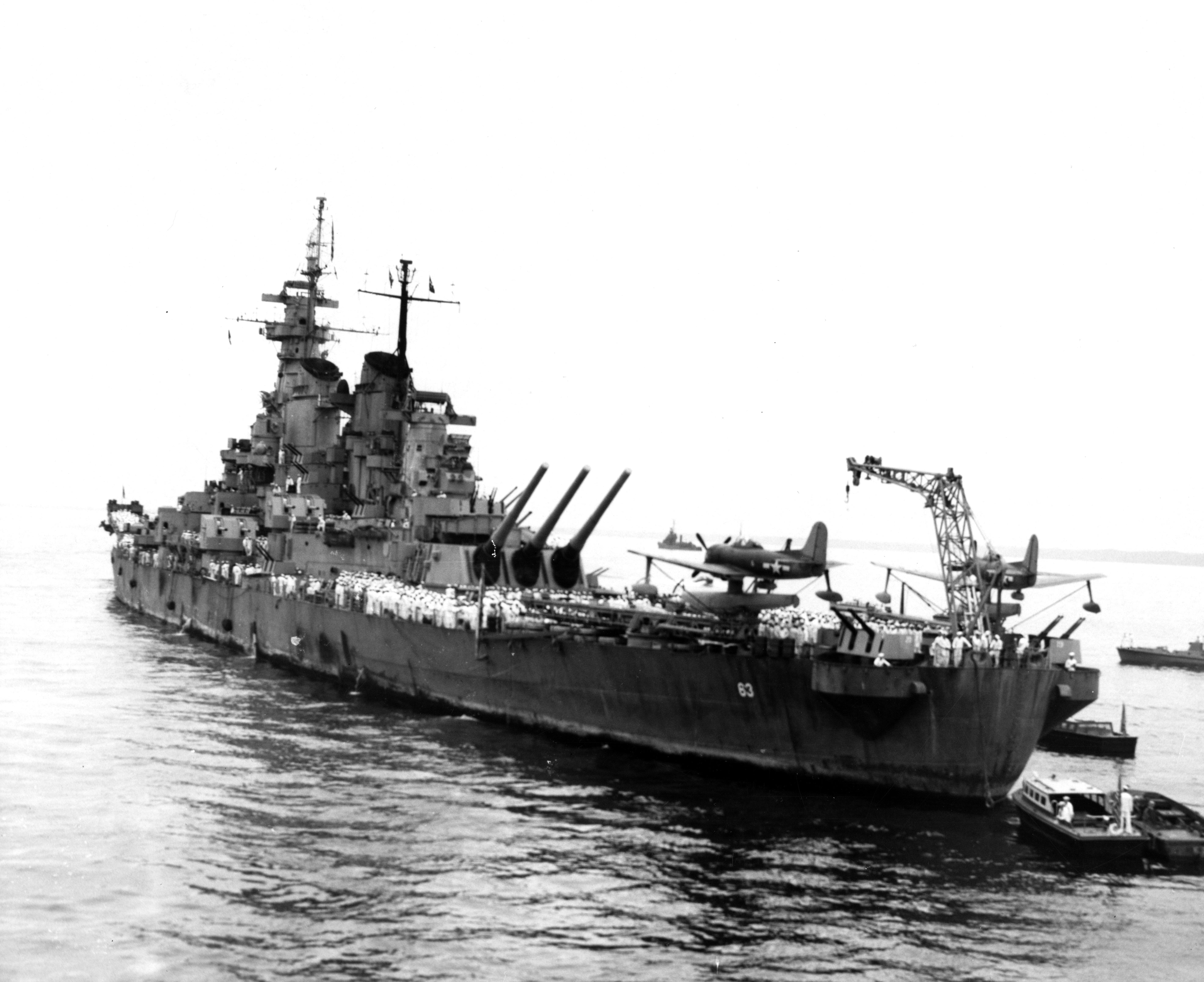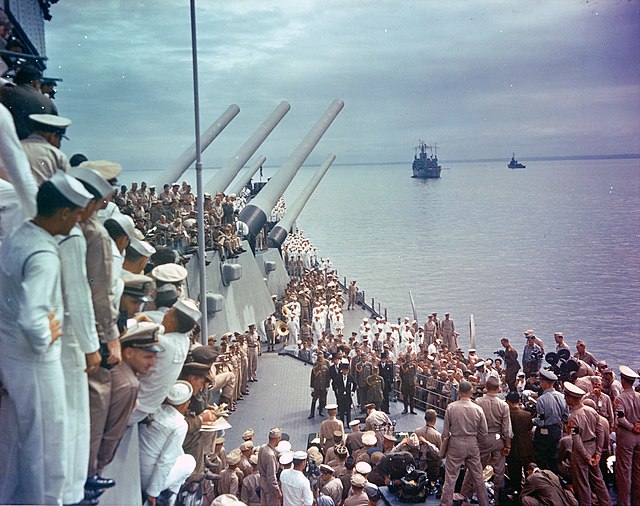On August 14, 1945, Emperor Hirohito of Japan made the decision to surrender unconditionally to the Allies. The formal Japanese surrender to the United States would take place on September 2, 1945.
Here are some little-known facts about the surrender of Imperial Japan that you may not know about.
1) Japan Surrendered Because It Feared the US Might Not Invade
The strategy of Japan to obtain honorable surrender terms was to cause an inordinate amount of casualties to the Americans in an invasion the Japanese thought was imminent.
The Japanese wanted Hirohito to remain on his throne and Japan not be occupied or disarmed. They also believed that they enjoyed good enough relations with the Soviets that Stalin might act as the intermediary and negotiate with President Truman and the Allies.
After the second atomic bomb fell on Nagasaki, the Imperial Staff surmised that the Americans couldn’t possibly have more than 10 atomic bombs. They believed that they could survive that many without unconditionally surrendering thus forcing the Americans to still invade.
Ultimately the emperor decided against that and directed his cabinet to accept the unconditional surrender demands of the Allies. He made the surrender announcement to the Japanese People on the next day, August 15.
2) The Japanese Did Not Always Obey the Emperor Without Question

Rather than salute and follow the orders of Emperor Hirohito without question, the Army staff tried to stage a coup. Young Army staff officers met in a bunker on August 11. There, they plotted to overthrow the government and continue the fight if the emperor surrendered.
On the night of August 14, they stormed the imperial palace. They desperately tried to find the recording of Hirohito announcing the surrender, but they couldn’t. The coup dissolved by the next morning with the arrest or suicide of the plotters.
Then there was an attempt led by a guy who was even more radically ultranationalist than the militarists in the government. He and 40 followers tried to overthrow the government of the city of Matsui and create a popular uprising to continue the war. The attempt failed within hours with arrests of the men.
On August 18, the Air Force sent four B-32 bombers to conduct photo recon of Japan and test whether they really intended to keep to the terms of the ceasefire. They were attacked by Japanese fighters from Atsugi acting on their own initiative. The Air Force sent more bombers the next day to see if it was just an isolated incident and were attacked by fighters flying from Yokosuka. The U.S. then ordered the Japanese to remove the propellers from all their aircraft.
Japanese soldiers on various islands like Saipan, Peleliu, Iwo Jima, the Marianas, and the Philippines held out for more than 20 years.
3) There Was More Than One Japanese Surrender

Unlike Germany, which had been overrun by millions of Allied troops, the Japanese home islands had no U.S. troops on them. Additionally, in China, there was an entire army of almost two million Japanese that were undefeated. Further, Japanese troops that had been bypassed by the Allied advance were still scattered all over the Pacific. In total, more than seven million Japanese servicemen were still in arms in the Pacific Theater.
Separate surrenders of Japanese forces took place in Borneo, Malaysia, Singapore, the Philippines, Taiwan, Korea, Vietnam, Manchuria, and mainland China.
4) Japan’s Surrender Did Not End the War
The surrender of Japan in the formal ceremony in Tokyo Bay on September 2, 1945, did not end the war. It was just an end to open hostilities. An actual state of war existed between the United States and Japan until the Treaty of San Francisco was signed on April 28, 1952.
In the interim, the United States would have been able to resume hostile action against Japan for any breach of the surrender agreement. And Japan knew this. For about six years Japan was not a sovereign country but an occupied territory of the United States.

5) A Vast Air Armada
Twelve hundred aircraft of the Army Air Corps and the Navy overflew the surrender ceremony at just 1,500 feet. These aircraft represented virtually every American aircraft type in the Pacific war: Hellcats, Corsairs, Flying Fortresses, PBY Catalinas, SBD Dauntlesses and SB2c Helldivers, Avengers, Liberators, Mustangs, Lightnings, and Thunderbolts all flew over Tokyo bay in formation. At that low altitude, the sound of the thousands of engines must have been deafening.
6) The Last Battleship
The IJN Nagato, the only surviving capital ship in the Japanese Imperial Fleet, was present at the surrender. She was the sole survivor of Japan’s 12 battleships. She had been Yamamoto’s flagship when the Pearl Harbor attack occurred.
After the war, she was confiscated and destroyed at an atomic bomb test on Bikini Atoll.

7) The ‘Mighty Mo’
The surrender of the Japanese was held in Tokyo Bay aboard the battleship USS Missouri. This was intended for various reasons.
Firstly, there was a serious concern that if the ceremony were held on land fanatical Japanese units could attack. To stave off any last gesture of defiance by the Japanese, the 4th Marine Regiment landed on the beach just outside Tokyo Bay in Kanagawa. This was the location where Japan had signed its first peace treaty with the U.S. in 1854. Additionally, the 11th Airborne Division was airlifted to Atsugi airbase.
Several hundred U.S. Navy ships also jammed Tokyo bay. These included 10 battleships, five aircraft carriers, five heavy cruisers, 10 light cruisers, 50 destroyers, and dozens of other vessels including enough Fast and Attack transports to land an army. Not to mention the 1,200 aircraft that flew over in formation.

Secondly, there were other ships in the U.S. Navy that, by virtue of their battle record, might have been more deserving of the honor of hosting the surrender ceremony like the battleship USS South Dakota or the carrier Enterprise. Yet, the battleship USS Missouri was chosen as she was Admiral Halsey’s flagship for the Third Fleet. She also had a more spacious deck to hold such a ceremony.
Finally, Missouri was the home state of President Harry Truman.
The surrender had happened so quickly that there really wasn’t much time to paint the ship. She arrived in Tokyo Bay looking like a warship: her hull streaked with rust and black scorch marks from the firing of her guns.










COMMENTS
You must become a subscriber or login to view or post comments on this article.